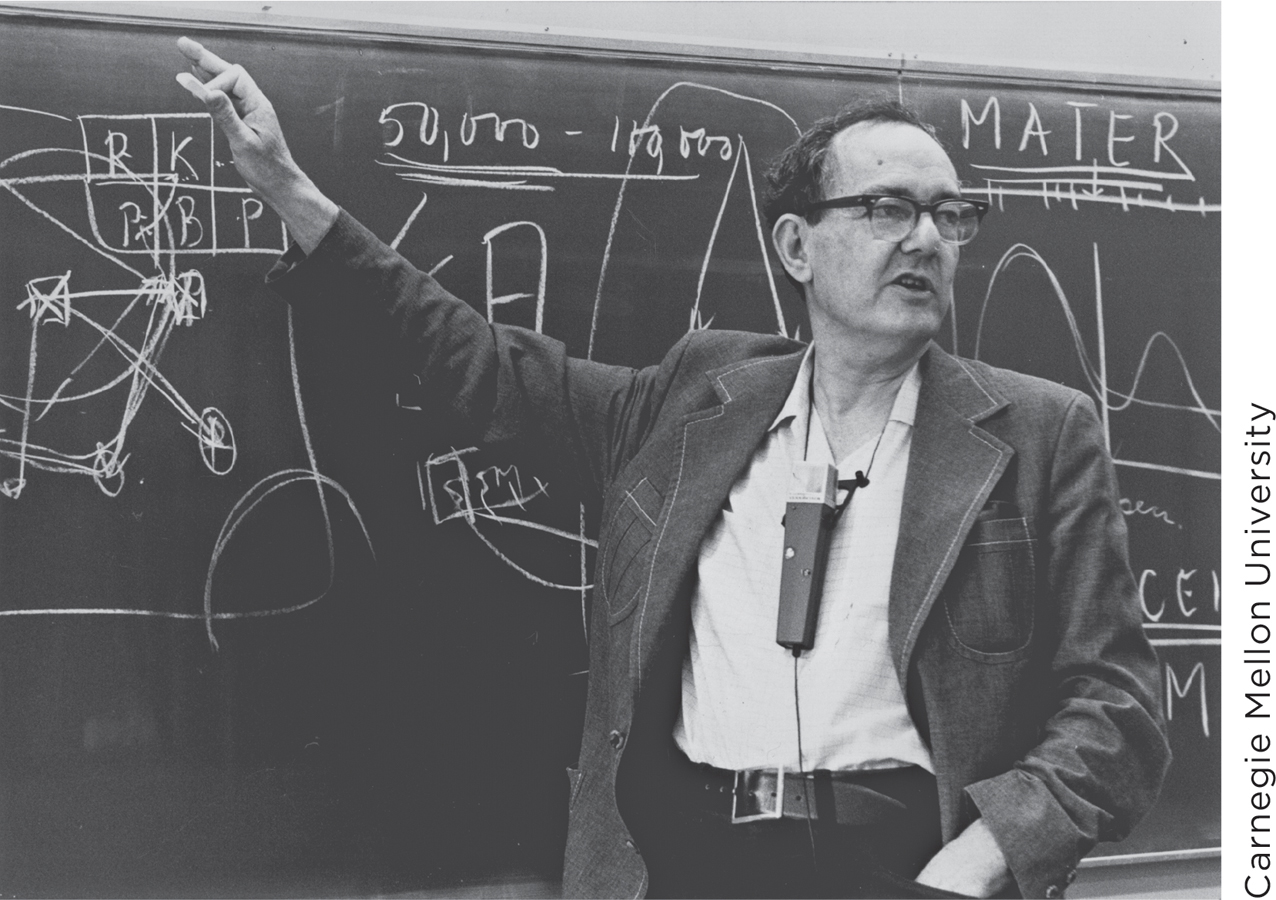8.5 Problem Solving
If you like puzzles and games, you may know the Tower of Hanoi problem (see photo). At the start, disks are stacked on one of three pegs. You have to move them to a different peg while following two rules: (1) Move only one disk at a time, and (2) never put a larger disk on a smaller one. The simple combination of disks, pegs, and rules produces a challenging puzzle.

When working on this sort of task, you’re engaged in problem solving, a thinking process in which people try to reach a solution by working through a series of steps. Problem solving occurs not only when working on puzzles, but when tackling challenges in science, mathematics, or engineering, where you have to figure out how to work through a series of challenging steps to reach a solution.
The Problem Space and Heuristic Search
Preview Question
Question
 How do people solve problems?
How do people solve problems?
To solve a problem, you have to maneuver through its problem space. A problem space is the full set of steps it is possible to take when solving the problem. Suppose the problem is to form an English word out of the three letters tca. The problem space consists of the six possible arrangements of the letters: tca, tac, atc, act, cta, cat.
On simple problems—
How do people solve problems when they can’t envision the entire problem space? As in judgment under uncertainty, heuristics come to the rescue. People use simple strategies, or problem-
One such heuristic is means–
WHAT DO YOU KNOW?…
Question 19
When the space is overwhelming, rather than working through every possible step, sometimes we simply do something that will get us at least a little bit closer to the solution, according to our own analysis.
Problem Solving by People and by Computers
Preview Question
Question
 How do computers solve problems?
How do computers solve problems?
Two types of evidence indicate that people use means–
When devising study strategies, what does your means–

The second source of evidence involves computers. Allen Newell and Herbert Simon (1961) wrote a computer program, the General Problem Solver, that solved a wide variety of problems. It did so through means–
WHAT DO YOU KNOW?…
Question 20
True or False? Newell and Simon’s computer program, the General Problem Solver, solved problems using means–
| A. |
| B. |
THINK ABOUT IT
In what ways might information processing by a computer be similar to human thinking? In what ways does it differ from human thinking?
RESEARCH TOOLKIT
Think-Aloud Protocol Analysis
If you watch people work on a problem—
Finding out is more difficult than it may sound. You could just ask people what they were thinking, but this solution isn’t good enough. Because information in short-
Fortunately for research on human thinking, psychologists have devised a research tool that overcomes this difficulty. Think-
You can see how this works from the transcription below—
I’ll take 2 from C, and place it on B.
And I’ll take 1 and … place it from A to B.
So then, 4 will go from A to C.
And then …, um …, oh …, um …
I should have placed 2 on C. But that will take time. But I’ll stay with this a little more.
I’ll take 1 from B and place it on A.
Then I’ll take 2 from B to C.
Oh, this won’t do….
I’ll take 2 and place it from C to B again.
And then, I’ll take 1, and from A….
Oh no! If I do it this way, it won’t work!
The protocol provides a window into the mind of the participant. You can see which strategies the person tried, and even his or her reaction when one of the strategies failed.
Protocol analysis has been applied widely. For example, to find out whether people were giving honest or “fake” answers on a personality test, researchers asked test takers to think out loud while answering test questions (Robie, Brown, & Beaty, 2007). Think-
“I wonder what type of responses they want?”
[Reads item] “Generally yes, so I’ll say probably yes because it’s true and it looks good on the sheet.”
“If I answer definitely yes to all of these, they’ll think I’m lying.”
[Reads item] “I don’t remember reading anything about getting a commission…. However, if I say definitely yes, they are going to be thinking that I am going to be cutthroat.”
Think-
WHAT DO YOU KNOW?…
Question 21
Which of the following statements is true?
Think-
aloud protocol analysis was designed to understand the strategies people use to solve problems. A. B. Participants who engage in think-
aloud protocol analysis find that even with practice, verbalizing their thoughts impairs their thinking. A. B. Think-
aloud protocol analysis is not very useful for understanding the thinking processes people use when solving the “problem” of how to answer items on a personality test. A. B.